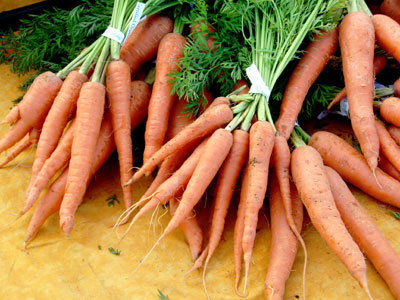
The other day, a young girl asked me, “Are you the lady that writes the flower column in the paper?” I was thrilled to know that my readership includes middle schoolers. Our conversation soon turned to vegetables, which are good to plant at this time of year because of how late they can be started. Gardening can be a wonderful learning opportunity for all of us, but especially for children.
In a garden, children can breathe fresh air, discover bugs and watch things grow. And, of course, a garden offers kids and everyone else fresh, tasty and homegrown food. What better place for kids to play than in a place where they can use their hands and connect with the earth? Where else can they make a plan for a plot of land and learn the lessons of hope and wonder, suspense and patience and even success and failure? In a garden, you can have conversations about life and even death in a way that doesn’t seem so sad.
With the school year just starting, now would be the perfect time to encourage your child to grow something and keep track of its progress by taking pictures and notes. Daily gardening really can make a difference for a sustainable future. Maybe what he or she learns could even be used for a school project. Here are some ideas.
September is the perfect time to start cool season vegetables.
Try growing carrots
Carrots are fun to start from seed as they can be harvested even when they are small. For flavor, it’s difficult to beat a Nantes carrot. Nantes Coreless and Little Finger are two popular varieties. They’re not carrots you’ll find in the grocery store because they’re difficult to harvest commercially and they don’t store well. But both varieties are juicy and sweet.
Nantes Coreless grows to 6 or 7 inches long, is blunt-tipped and fine grained. Little Finger is unmatched for snacks, pickling or steaming. It grows to just 3 to 4 inches long and is ideal for container gardening, too.
Red Cored Chantenay has broad shoulders and strong tapered tips. This wedge-shaped carrot is also rarely grown by commercial growers. For the home garden it produces 6-inch long carrots that keep well when left in the soil, store well after digging and are sweet and crunchy. They perform well in heavy soil, too.
Danvers Half Long is another variety that is tasty raw, cooked or juiced. It is one of the best carrots for storage as it stays crisp. The carrots found at the super market are usually Imperators, just so you know.
Other fall veggies
You can still start peas, beets, spinach, arugula, mustard and radish now from seed. It is better to start other veggies like lettuce, chard, broccoli, cabbage, cauliflower, kale, onions, leeks and Brussels sprouts from start. If your veggies haven’t gotten a good start before the soil cools, they’ll just sit there until spring. Remember to rotate your crop locations so insects and diseases don’t cause problems. Also, be sure to amend your soil with compost to replenish the nutrients that have been used by your summer veggies and flowers.
Flowers in winter are always welcome, so I like to plant early blooming types of sweet peas at this time of year. These varieties flower in the shorter days of late winter.
Winter Elegance and Early Multiflora are common early flowering types.
Also plant some of the more fragrant spring-flowering heirloom and Spencer sweet peas at the same time to extend your harvest time. My very favorite sweet pea with long stems for cutting and an intense fragrance is called April in Paris. Large ruffled blossoms are a soft primrose cream, tinted at the edges in dark lilac that deepens and increases with age. You can’t go wrong no matter what color or style sweet pea you choose. They are all beautiful.
If you grow roses, fertilize now to encourage another round of blooms. A well-fed rose not only rewards you with beauty and fragrance but can stay healthy and resist attack from insects and diseases. Roses grown in sandy soil or containers need more frequent feeding than those grown in loam or heavier soil. Make sure the soil is moist before fertilizing and water well afterward.
Whatever you grow, include the kids in the garden. It’s a free and fun activity.
– Jan Nelson, a landscape designer and California certified nursery professional, will answer questions about gardening in the Santa Cruz Mountains. E-mail her at ja******@*ol.com, or visit www.jannelsonlandscapedesign.com to view past columns and pictures.












